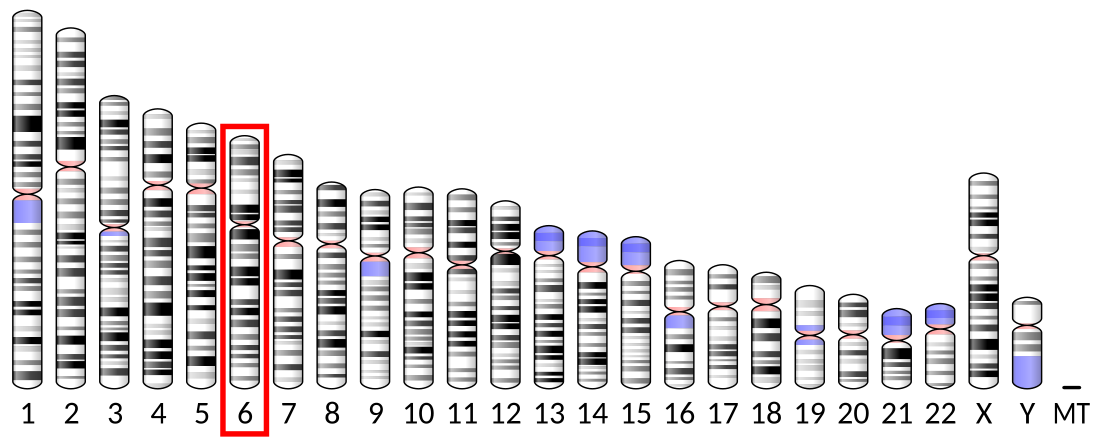Top Qs
Timeline
Chat
Perspective
NFYA
Protein-coding gene in the species Homo sapiens From Wikipedia, the free encyclopedia
Remove ads
Nuclear transcription factor Y subunit alpha is a protein that in humans is encoded by the NFYA gene.[5][6]
Remove ads
Function
The protein encoded by this gene is one subunit of a trimeric complex NF-Y, forming a highly conserved transcription factor that binds to CCAAT motifs in the promoter regions in a variety of genes.[7] Subunit NFYA associates with a tight dimer composed of the NFYB and NFYC subunits, resulting in a trimer that binds to DNA with high specificity and affinity. The sequence specific interactions of the complex are made by the NFYA subunit, suggesting a role as the regulatory subunit. In addition, there is evidence of post-transcriptional regulation in this gene product, either by protein degradation or control of translation. Further regulation is represented by alternative splicing in the glutamine-rich activation domain, with clear tissue-specific preferences for the two isoforms.[8]
NF-Y complex serves as a pioneer factor by promoting chromatin accessibility to facilitate other co-localizing cell type-specific transcription factors.[9]
NF-Y has also been implicated as a central player in transcription start site (TSS) selection in animals.[10] It safeguards the integrity of the nucleosome-depleted region and PIC localization at protein-coding gene promoters.
Remove ads
Interactions
NFYA has been shown to interact with Serum response factor[11] and ZHX1.[11][12] NFYA, NFYB and NFYC form the NFY complex and it has been shown that the NFY complex serves as a pioneer factor by promoting chromatin accessibility to facilitate other co-localizing cell type-specific transcription factors.[7]
Structure
The atomic structure of the NFY heterotrimer in complex with dsDNA was resolved via X-ray crystallography (PDB ID 4awl).[13] Using one of the NFYA alpha helices as a template, structure inspired stapled peptides were designed to disrupt the NFY heterotrimer formation by preventing NFYA from binding to the NFYB/C heterodimer.[14]
References
Further reading
External links
Wikiwand - on
Seamless Wikipedia browsing. On steroids.
Remove ads







